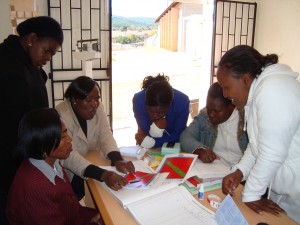Reminders of Hope
Wednesday night, I arrived home in one piece after four exhausting flights from Matsapha. I had the opportunity to watch the women’s world cup final match with my family yesterday afternoon, where a grieving Japanese team beat the US to win their first ever world cup title. Though I have not had a chance to really follow the women’s world cup from Swaziland, I read about both teams to get a better picture of the matchup. It seems that Japan was really not a spectacular team, having lost to this same US twice before. They came in to the match the underdogs, yet in the wake of their nation’s troubles, they rallied to win a game that has become a beacon of hope to Japan.
Watching the match, I could not help but think of the kids in Swaziland where, even a year after the world cup, kids (and adults) still wore soccer jerseys and every once in a while, played vuvuzelas which we could hear across town.
Working at a pediatric AIDS clinic, I saw many children living through horrible conditions over which they had no control. While in country, I wondered how they could come to teen club and smile despite being handed an unfair shot at life. They did not show any outward bitterness, even though I knew many of them had a difficult time coping with the fact that they had HIV in a society where such people are regarded as second-class citizens, or even cursed. With so few opportunities afforded them, they still had their dreams and their faith. One of the boys I met wanted to be a pilot; another, a chef; and yet another, a teacher. I realized it was the same inner strength and the spirit that I watched in the teams today that was within these kids that kept them going.
I am so thankful for having had this opportunity to go meet these kids and to show them a little of God’s love in whatever small way I could. Amidst the economic crisis in Swaziland, I hope that the projects we worked on will be able to improve the quality of life for at least a few of these children and families even now that we are no longer there.
Thank you for following my blog. I hope you have been able to experience Swaziland with me through it.








